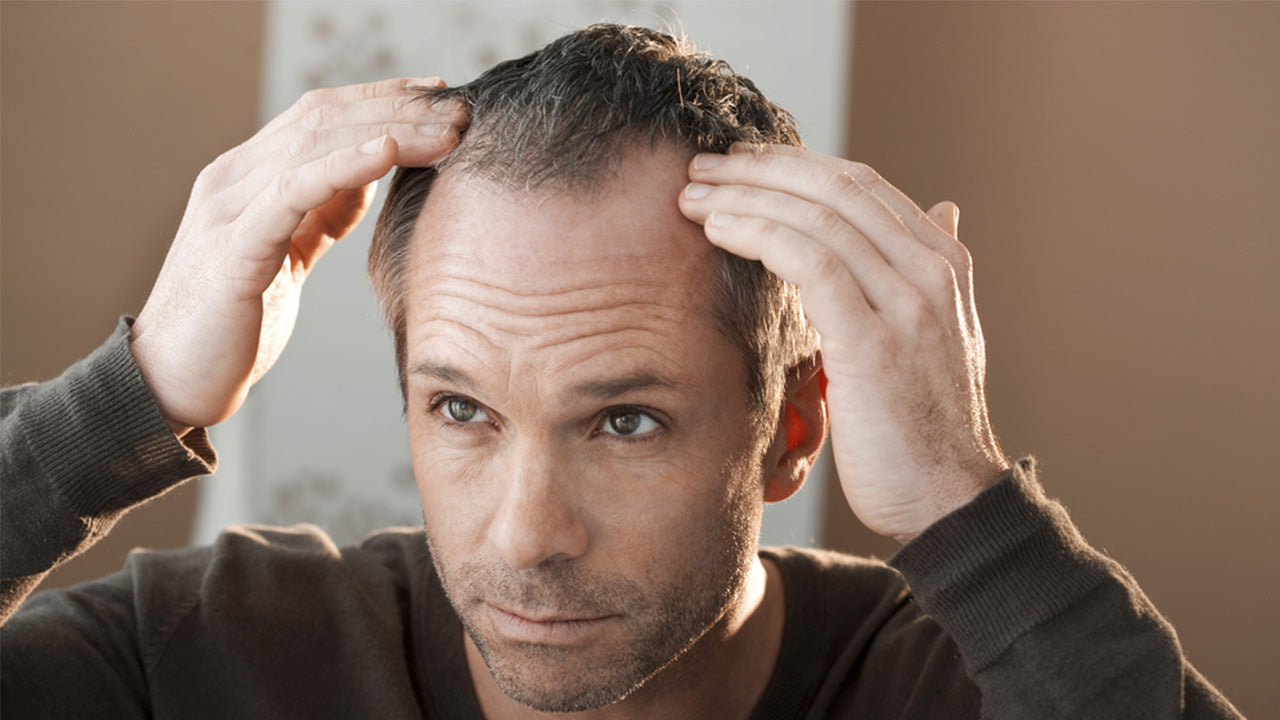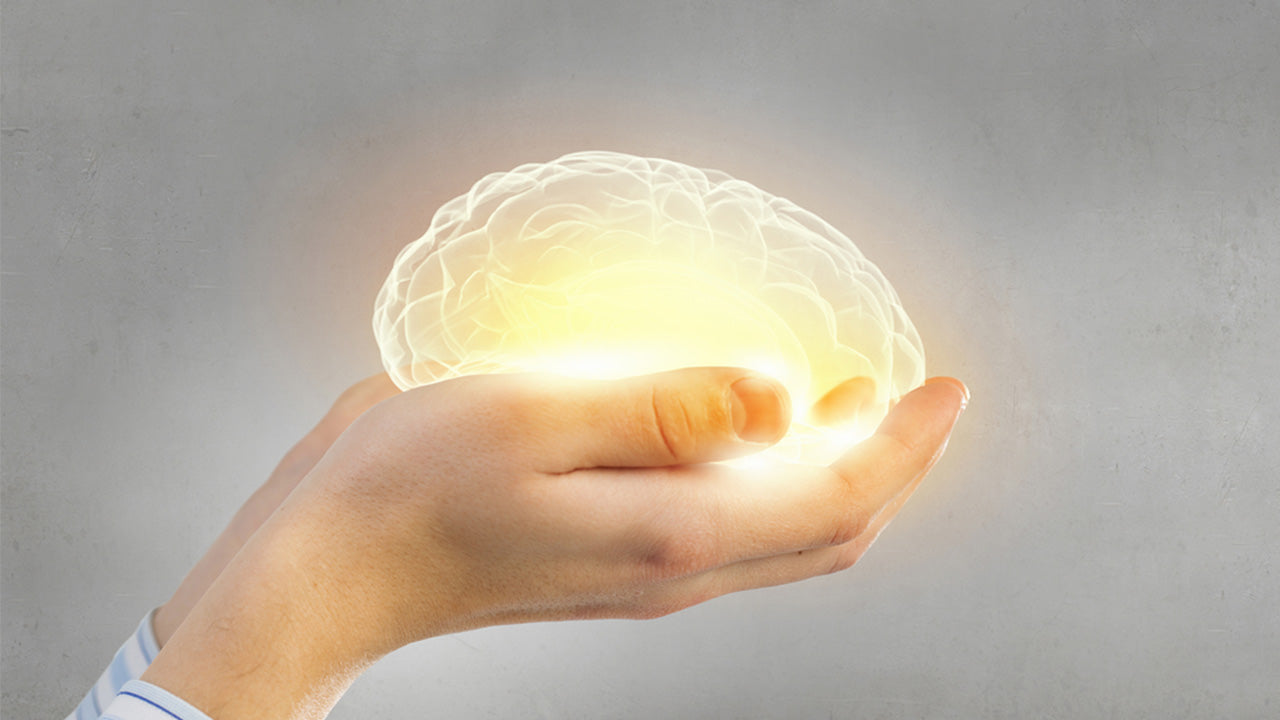Where to Find the Top Amino Acids for Hair Growth
 By: by Amino Science
By: by Amino Science

Amino acids are the building blocks of protein in the body, and even outside our bodies protein is still a necessary ingredient. About 88% of our hair, for instance, is comprised of the protein keratin, and we cannot produce more of it without the proper balance of amino acids for hair growth.
Instead of trying to make your hair lustrous and thick with oils, conditioners, and other products that clog up your scalp, why not try working from the outside in? The following article provides the details for the top amino acids necessary for new and healthy hair growth, plus where to find these aminos in your dietary choices.
Why Amino Acids for Hair Growth?
When you think of your hair care routine, you don't usually first think about your diet, but at the end of the day we are what we eat.
Amino acids are chemical compounds comprised of functional groups, carboxyl groups, and anime groups of molecules, and they are responsible for creating the protein that is about 1/5th of the average human body.
It takes 18 different amino acids to produce the keratin protein in our hair, and while some of these amino acids can be manufactured in-house by the body (nonessential amino acids), the rest of them we need to get from outside sources like food (essential amino acids). Let's make sure you have enough amino acids for making keratin. First things first: which amino acids are required?

Hair Structure
The structure of our hair has three distinct parts:
- The medulla: This is the core of the hair shaft, made of a soft, oily substance.
- The cuticle: A thin protective layer that contains the nourishment needed for hair growth, highly keratinized and made of layered scale-like cells that are about 60 x 6 micrometers in size.
- The cortex: The main portion of hair, comprised of long chains of keratin that provide elasticity and suppleness. The cortex's cells are bound by the lipids and proteins that make up an intercellular cement.
The Amino Acid Makeup of Keratin
Keratin is a family of proteins that make up significant portions of not only our hair, but also the topmost layer of our skin and nails as well. The 18 amino acids that make up keratin are:
| Cysteic acid | Aspartic acid |
| Arginine | Serine |
| Glutamic acid | Proline |
| Tyrosine | Glycine |
| Alanine | Cystine |
| Valine* | Histidine* |
| Threonine* | Methionine* |
| Isoleucine* | Leucine* |
| Lysine* | Phenylalanine* |
The amino acids which have been starred are eight of our nine essential amino acids (every one but tryptophan), meaning it is essential that we consume them either in our foods or via an amino acid supplement. Not only are these essential aminos needed for hair, but they are also necessary for new muscle growth, hormone regulation, and the production of the red blood cells that carry oxygen and nutrients throughout our bodies (including to our hair follicles).
However, for hair growth, we'll concentrate on the half of keratin's amino acids that stimulate and encourage the follicles to grow. For the amino acids for hair loss, read (or skip) to the end of this article.
The Top 9 Amino Acids for Hair Growth and Where to Find Them
These are the top amino acids needed for hair growth, plus their food sources.
1. Cysteine
Cysteine belongs at the top of the list because it helps stimulate new hair growth and is an antioxidant that serves to protect against sun damage and other degrading radiation. Cysteine can treat alopecia, a condition in which whole clumps of hair fall off of the body in patches. Plus cysteine brings sulfur to our hair cells, which is necessary for strength and a supple texture.
Food Sources:
- Wheat germ
- Chicken
- Broccoli
- Brussels sprouts
- Dairy products (yogurt, milk)
2. Cystine
Cystine is not the same as cysteine, though there is a reason their names are so similar. Cystine is a nonessential amino acid, so-called because it is made up of two bonded cysteine molecules by our bodies' natural functioning. Cystine is also known to stimulate new hair growth and to prevent hair loss.
About 10-14% of our hair and skin is comprised of cystine, whose double-bonded cysteine molecules help provide structural strength to our hair shafts. Bonus: cystine is also important for immune system support.
Food Sources:
- As cystine is constructed out of two cysteine molecules by our bodies, the food sources of cystine are the same as cysteine.
3. Proline
Proline is a nonessential amino acid that aids in collagen production, which plays a role both in the makeup of hair and in the preservation of muscle tissue.
Food Sources:
4. Methionine
This essential amino acid also provides the sulfur needed to guard against hair disorders, as well as powerful antioxidant abilities. A lipotropic, methionine breaks down and prevents fat accumulation in the bloodstream, making it valuable for cardiovascular health and for providing optimal blood flow to our scalps and hair follicles, important for healthy hair growth. Methionine also is required for synthesizing collagen needed for hair shaft strength.
Food Sources:
- Brazil nuts
- Fish
- Eggs
- Sesame seeds
- Cereal grains
5. Lysine
Speaking of collagen, lysine aids in collagen formation and helps the body absorb calcium (for bone strength). Lysine also has the ability to inhibit 5-alpha reductase from creating DHT (dihydrotestosterone) out of testosterone, which is the central cause for androgenic alopecia (aka male pattern baldness).
Food Sources:
- Red meat
- Pork
- Chicken
- Eggs
- Fish
- Legumes
- Nuts
- Dairy products
6. Glutamine
Glutamine's role in assisting new hair growth is to deliver the sulfur needed to synthesize cysteine at the scalp. It's a small role but also one of the many steps that cannot be skipped in forming healthy hair.
Food Sources:
- Beef
- Pork
- Chicken
- Eggs
- Dairy products
- Nuts
- Beans
- Legumes
- Spinach
- Cabbage
7. Glycine
Glycine's important role for hair is in collagen production, but it also helps aid our digestive functioning and the health of our central nervous systems, which means it helps prevent the hair loss potentially caused by nerve disorders.
Food Sources:
- Meat
- Fish
- Spinach
- Cabbage
- Beans
- Soybeans
- Dairy products
- Bananas
8. Tyrosine
This nonessential amino provides coloration to our skin and hair and is used in the production of melanin. Not only that, tyrosine works to alleviate mood disorders like depression, anxiety, and insomnia, all stressors that could easily lead to hair loss and hair weakness.
Food Sources:
- Almonds
- Lima beans
- Soybeans
- Pumpkin seeds
- Fish
9. Arginine
Arginine is another big player in healthy hair growth, because it's a precursor to nitric oxide. A healthy supply of nitric oxide is needed to boost blood supply to our scalps and to help our immune system's defenses against autoimmune diseases, including those that can lead to baldness.
Food Sources:
- Sesame seeds
- Coconut
- Hazelnuts
- Cashews
- Sunflower seeds
- Fish
- Wheat germ
Amino Acid Hair Treatment vs. Keratin Treatment
Now you know some of the dietary sources for the top amino acids needed for hair growth, but what about more concentrated proactive treatments? The amino acids for hair loss are methionine and cysteine, known to fight back against hair loss because they are sulfur suppliers, and when it comes to getting enough of these aminos the simplest way possible, many people consider using liquid amino acids for hair care.
One popular recipe, the Cherry Lola Treatment, calls for natural yogurt mixed with Braggs Amino Acids. With a little bit of baking soda added in, applying the mixture as a deep conditioner can lead to reduced frizz and damage repair.
Keratin treatments on the other hand (aka Brazilian blowouts) often involve a hair stylist/professional applying a chemical mixture of conditioner, keratin, and a formaldehyde-like substance to the hair before putting it under high heat to relax and smooth naturally textured hair. You'll want to make sure your hair is strong enough to survive this harsh treatment, however, as brittle hair exposed to such chemicals and heat can easily become damaged.
A Mane of Aminos
For improved hair growth and follicle health, dietary aminos and even external amino acid conditioning treatments are safe, natural, nurturing ways to care for your hair's keratin. With a few changes to your diet, amino acid supplementation, or amino acid applications, you can enrich and strengthen your hair without damaging it.

Up to 25% off Amino
Shop NowTAGS: benefits
Join the Community
Comments (0)
Most Craveable Recipes




 833-264-6620
833-264-6620



















